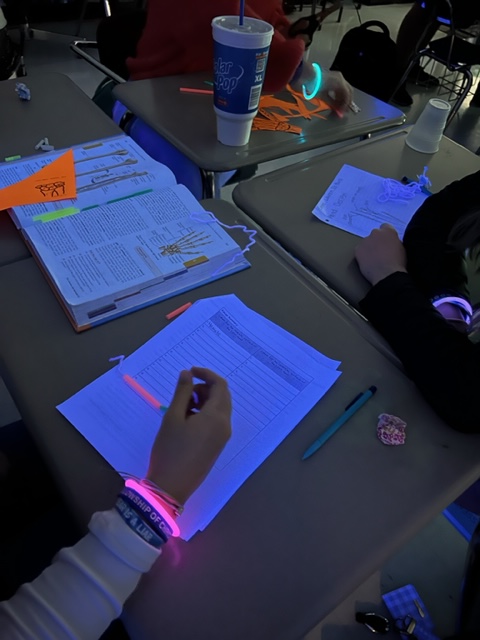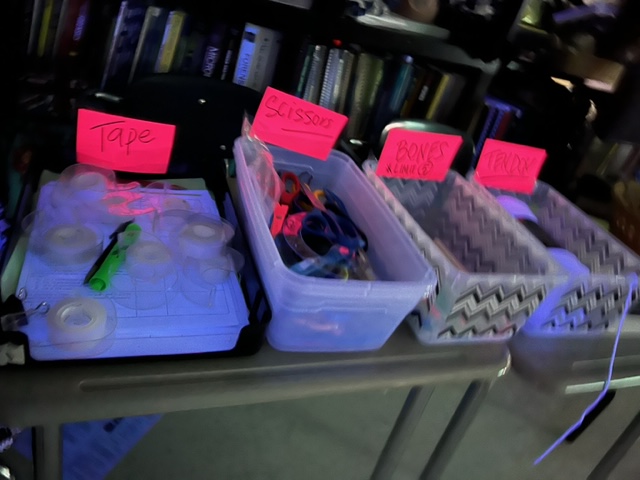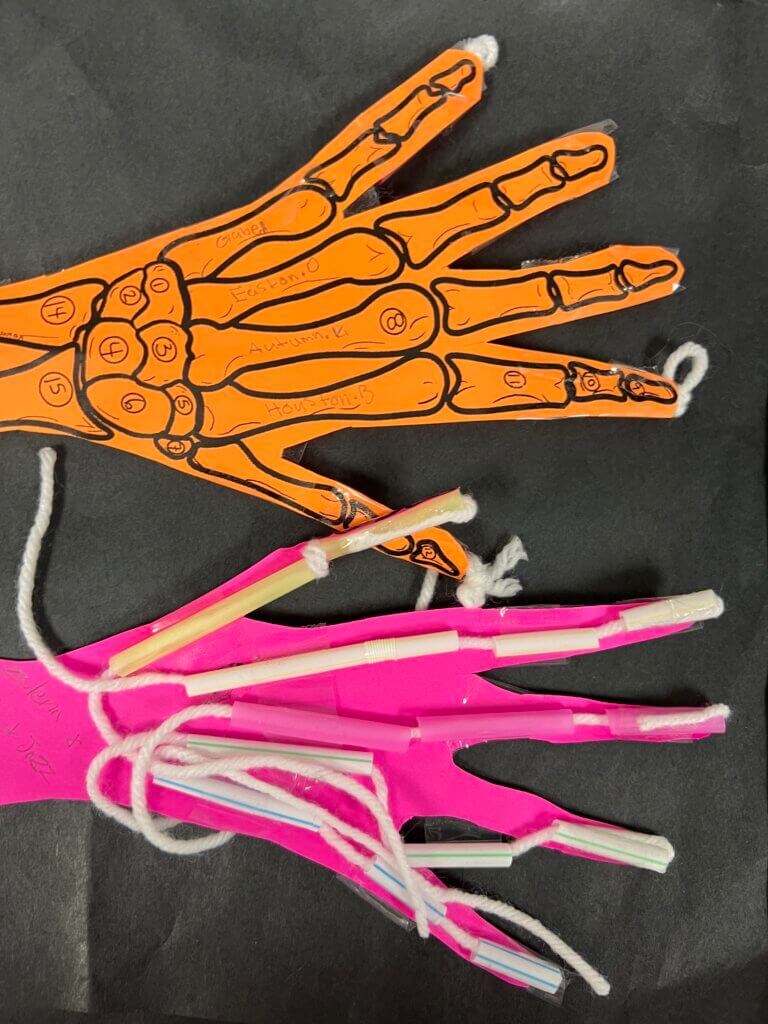Designing a Prosthetic Hand STEM Challenge Activity
What Do You Get When You Cross a Box of Drinking Straws, Yarn, and a Group of Inventive Teenagers? ……. A Prosthetic Hand, of Course! 🙂
I don’t know about your students, but mine absolutely LOVE a challenge! This year during our Skeletal System unit, I wanted them to have an opportunity to practice labeling the bones of the hand (since this is usually a struggle point for them). We actually did this activity right around Halloween but I think they would have enjoyed it anytime. I used it as a fun “glow” activity! I copied their work on neon paper and brought out my $10 Walmart blacklights that we use for Forensics (THIS is the kind of blacklight I have- I used 3 in my classroom). I also picked up packages of glow stick bracelets and necklaces and we wore them as we worked on the project. (I bought THESE 8 for about $1) It was so much fun!!
Here’s How I Set Things Up


I LOVE using neon with the blacklights! I used neon straws, pipe cleaners, index cards, and paper for the assignment. It looked so cool!
Getting it Started
This is the first STEM project we have done in Anatomy so I made sure in our intro that I stressed the fact that it will definitely take several tries before they come up with a design they will be pleased with and they shouldn’t panic if their hand didn’t work at first. My Honors students had the hardest time!! Interestingly enough, my students who are lower achievers academically were absolute rock starts with this project. I LOVED seeing them excel and show their gifts!
NYT Article
Before we began the activity, I had students skim the NYT article called “How Robot Hands Are Evolving to Do What Ours Can” to see how this type of engineering technology is helping improve lives. We discussed it briefly and highlighted the importance of designing a prosthetic that could potentially replace a human hand.
The Challenge
This STEM challenge required the hand to have a skeletal base (and they had to label it on their lab sheet), they had to use straws for the bones, and yarn for the tendons. Those were literally the only requirements. They had to design it so that it could pick up a piece of crumpled paper OR a lightweight plastic cup.
If this is something you’d like for your class to do, click the icon below or THIS LINK and head over to my TpT store to grab this activity!




